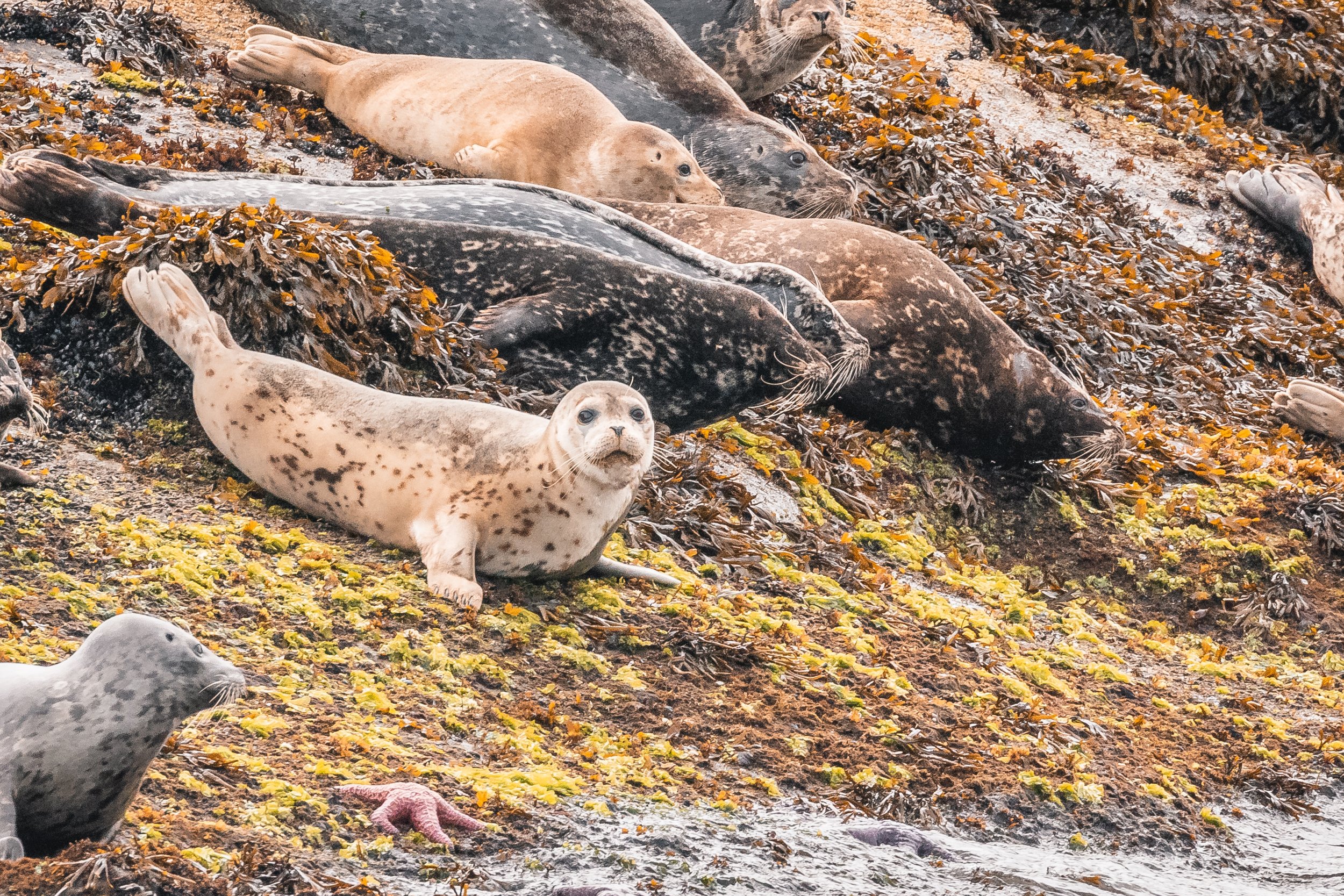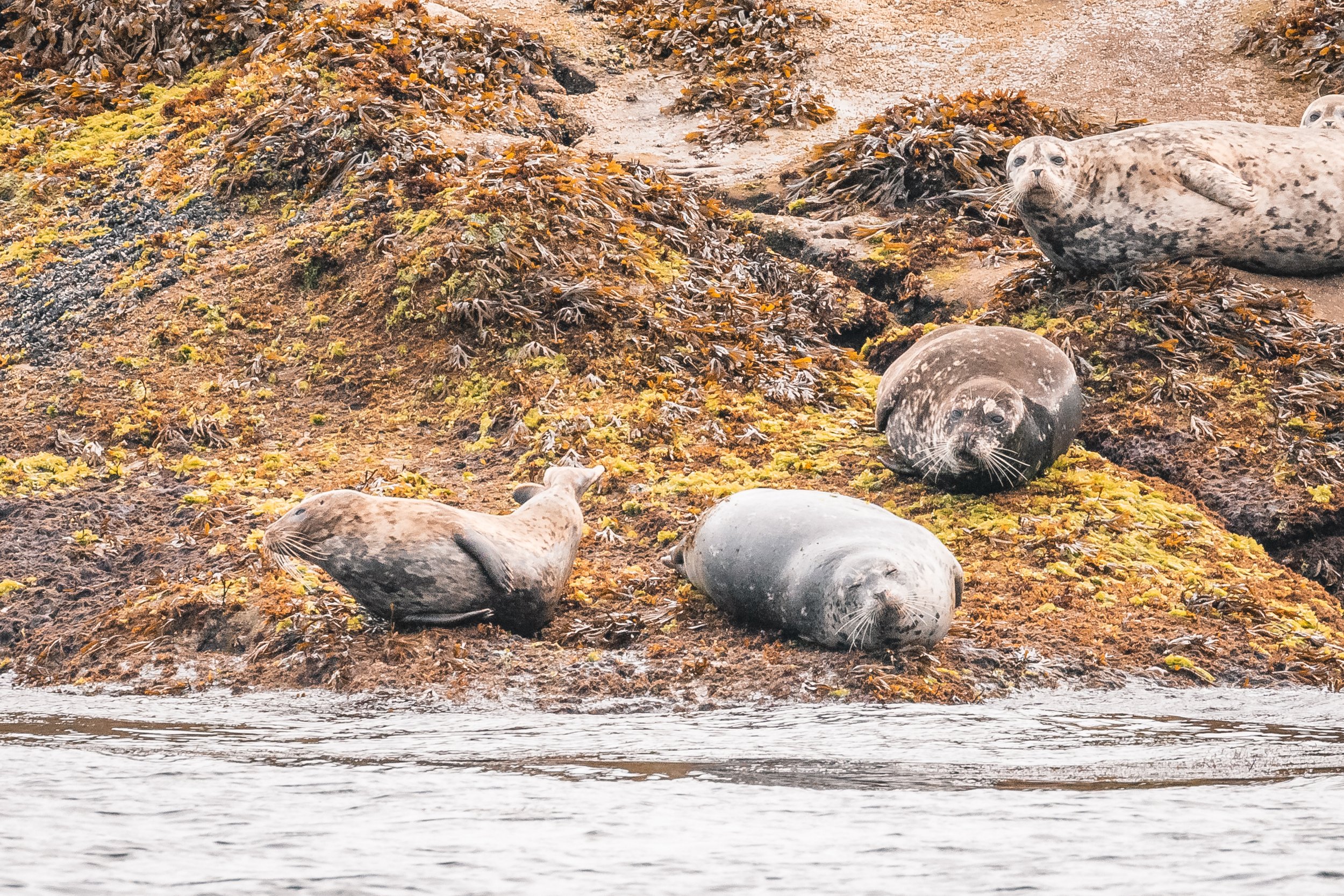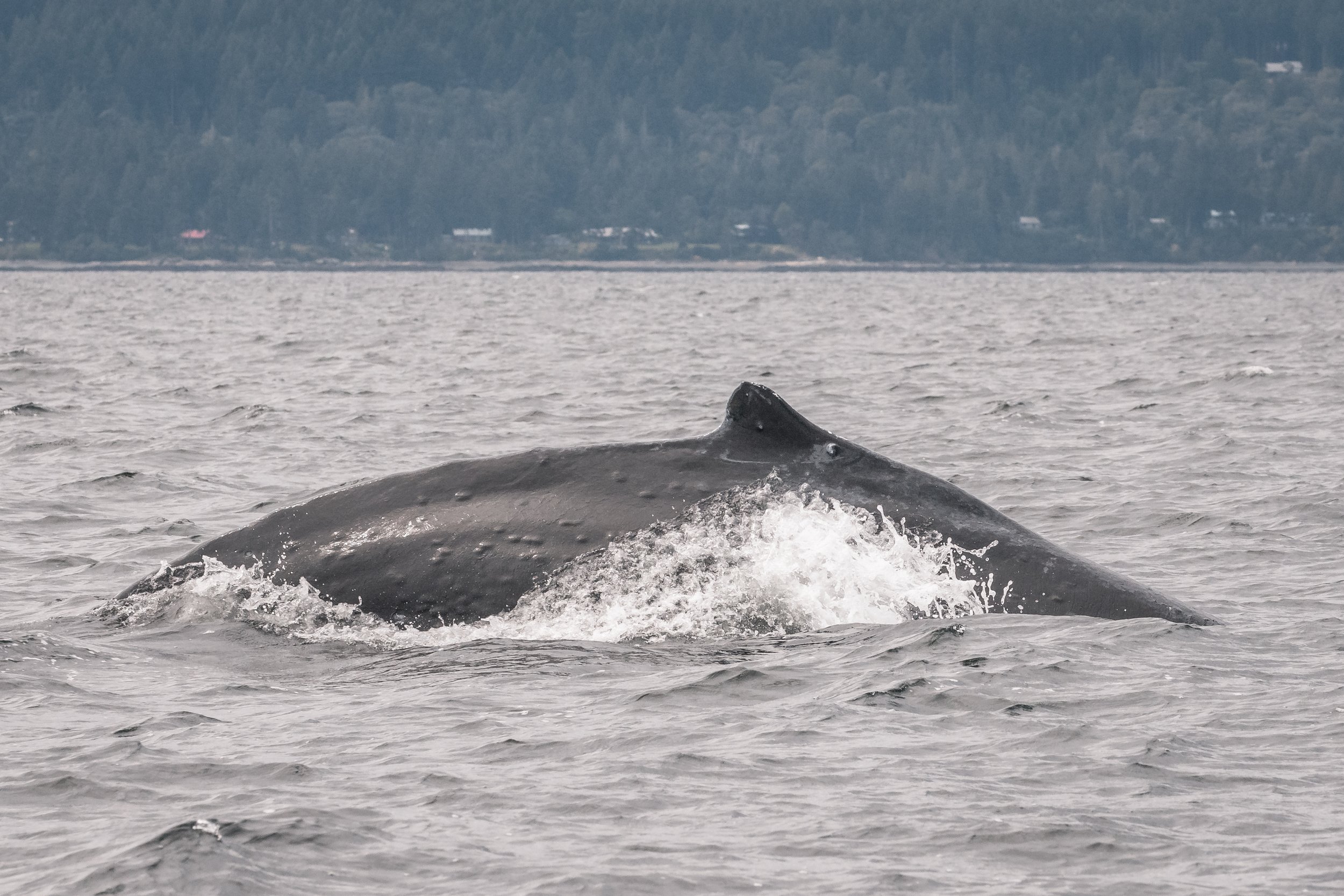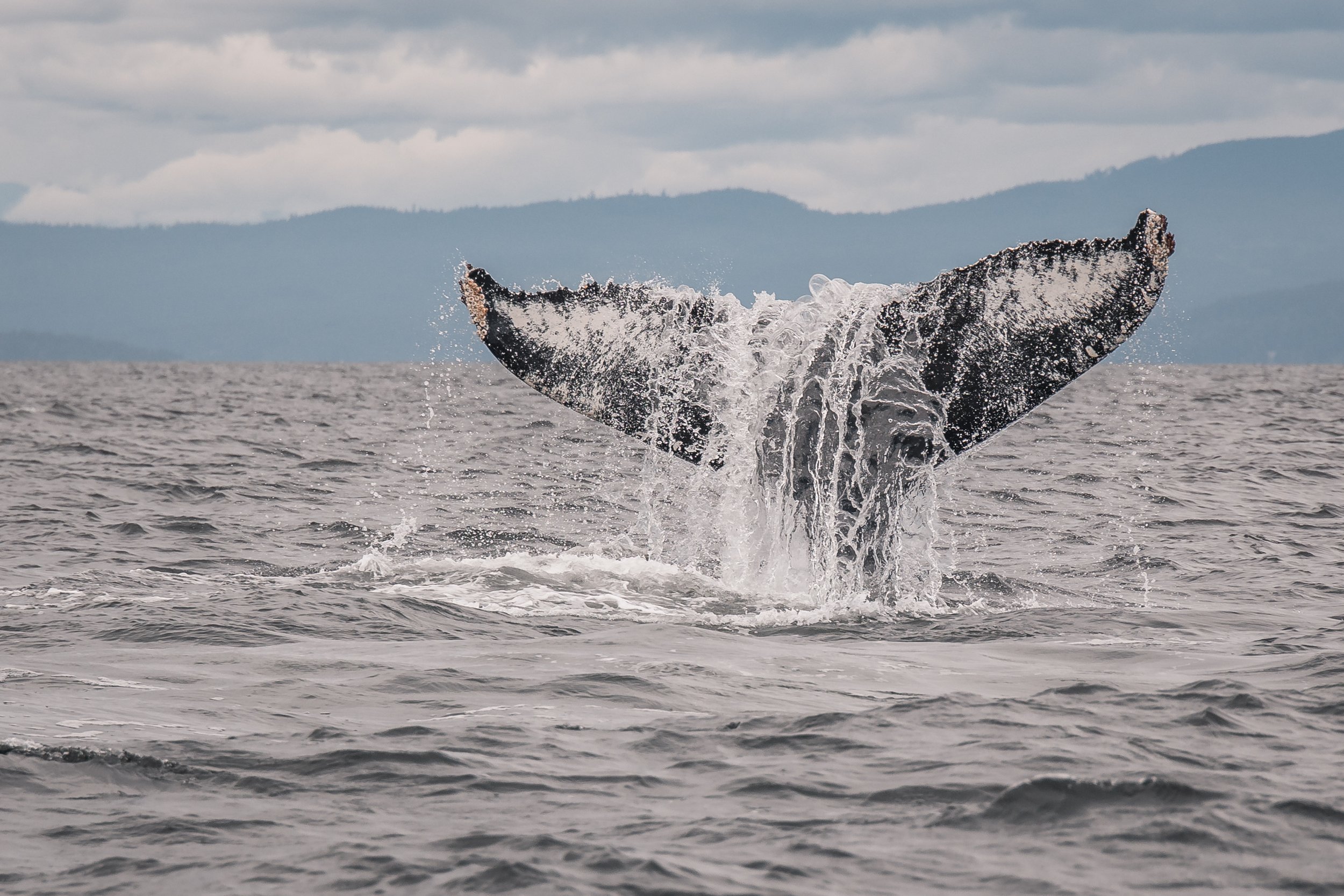June 29, 2022, 10:30 AM - Big Mama + Calf + T036A's
Why is Big Mama so special to us?
She was the first humpback to return to the Salish Sea! What does this mean…to fully understand this we need to take a trip back in time to the middle of the 19th century. It all started with stories of large whales in abundance during the summer and fall. The legends of the local Coast Salish people were that of so many humpbacks you could step on their backs to get across to the islands. These stories travelled fast, and to our humpbacks’ dismay, they soon fell apon the ears of whalers. This began the whaling boom of British Columbia, it happened in two waves in the Strait of Georgia. One occurred from 1866 to 1873, the second ran from 1907 to 1908. What the whalers were after was the oil, which is made from the blubber. One humpback could yield about 4500 litres of oil. Whaling did come to an end in the Salish Sea in 1908, but continued on the outer coast of the island until 1967 with the last station shutting down. Whaling lasted a total of 101 years decimating the prime target, the humpback whale. They were gone, not a single one remained.
That’s where Big Mama comes in! Although by the mid-1990s whaling was gone, still no humpbacks? Whaling had reduced numbers drastically from an estimated 15,000 to as few as 1000. By eliminating the humpbacks from the Salish sea a wealth of cultural knowledge of these rich feeding grounds spread down by generations of humpbacks was lost. For nearly 100 years, humpbacks were not found in the Salish Sea. There were a couple of sightings in 1976 and 1978, but no regular returns. Fast forward to the fall of 1997, when a single large whale was spotted just west of Victoria! This whale was Big Mama.
Big Mama migrates between Hawaii and the Strait of Georgia, with Hawaii being her breeding ground and the Strait of Georgia her feeding ground.
Humpback whales give birth to a single calf every 2 - 3 years and Big Mama has given birth to at least 7 calves:
2003 calf
2006 calf known as Split Fin
2010 calf known as Canuck
2012 calf known as Tulip
2014 calf known as Beak
2016 calf known as Poptart
2022 calf
The gestation period of Humpback whales is 11 - 11.5 months and the calves are nursed for almost a year. At around 6 months of age, the calves likely start feeding independently. During their migration baby whales are preyed upon by sharks and Transient killer whales. Many of the scars on the flukes we use to identify them are received during their early years, usually during the whale’s first year of life. The scars are left by killer whale teeth and this indicates that they survived a past attack. Once they reach maturity they are generally safe from predators such as killer whales who will focus their attacks on calves. Humpback females will fiercely protect their calves by slashing at the predators using their flukes and pectoral fins. Humpback whales can cause some damage during these attacks as they have barnacles growing on their pectoral fins which are hard and sharp.
Other than seeing Big Mama we were also lucky enough to see a pod of Transient Orca during the trip as well, the T036A’s! This is a group of 5 whales, the Matriarch travelling with four of her kids.
Enjoy the photos taken by our naturalists Janine Van Der Linden and Vanessa Vereschahen.
A small Steller Sea Lion hanging out surrounded by seaweed. Photo by Janine Van Der Linden
A closer look at our sea lion. Look at its tail! Photo by Janine Van Der Linden
Harbour seals enjoying the sun in the intertidal zone. You can also see a ochre star near the bottom left. Photo by Janine Van Der Linden
A couple more rock sausages on the rocks in the flat top islands. Photo by Janine Van Der Linden
Entrance Island. Photo by Janine Van Der Linden
Big Mamas calf showing off their pectoral fins. Photo by Janine Van Der Linden
The very playful calf is showing off one-half of his tail fluke! This can be used for ID later in life when he is no longer travelling with his mom. Photo by Janine Van Der Linden
Big Mama lifting their back out of the water, preparing for a dive. Photo by Janine Van Der Linden
A cartwheel This calf has a lot of energy since he has been enjoying his mothers high energy milk for the last few months. Photo by Janine Van Der Linden
You can tell Big Mama from her rounded dorsal fin. Photo by Janine Van Der Linden
A fluke waterfall! Photo by Janine Van Der Linden
Double-crested cormorants. Photo by Janine Van Der Linden
The light brown double-crested cormorant is a juvenile. Photo by Janine Van Der Linden
Raccoons on Saturnina Island. Photo by marine naturalist Vanessa Vereschahen
Harbour seals. Photo by marine naturalist Vanessa Vereschahen
Steller sea lion. Photo by marine naturalist Vanessa Vereschahen
T036A3 Storm/Mike III surfacing in the brown waters from the Fraser River. Photo by marine naturalist Vanessa Vereschahen
Photo by marine naturalist Vanessa Vereschahen
The newest member of the T036As, T036A5 born in 2021. Photo by marine naturalist Vanessa Vereschahen
Big Mama showing off her massive tail flukes. Photo by marine naturalist Vanessa Vereschahen
Big Mamas tail. Photo by marine naturalist Vanessa Vereschahen
Photo by marine naturalist Vanessa Vereschahen
Photo by marine naturalist Vanessa Vereschahen
Photo by marine naturalist Vanessa Vereschahen
Photo by marine naturalist Vanessa Vereschahen

























